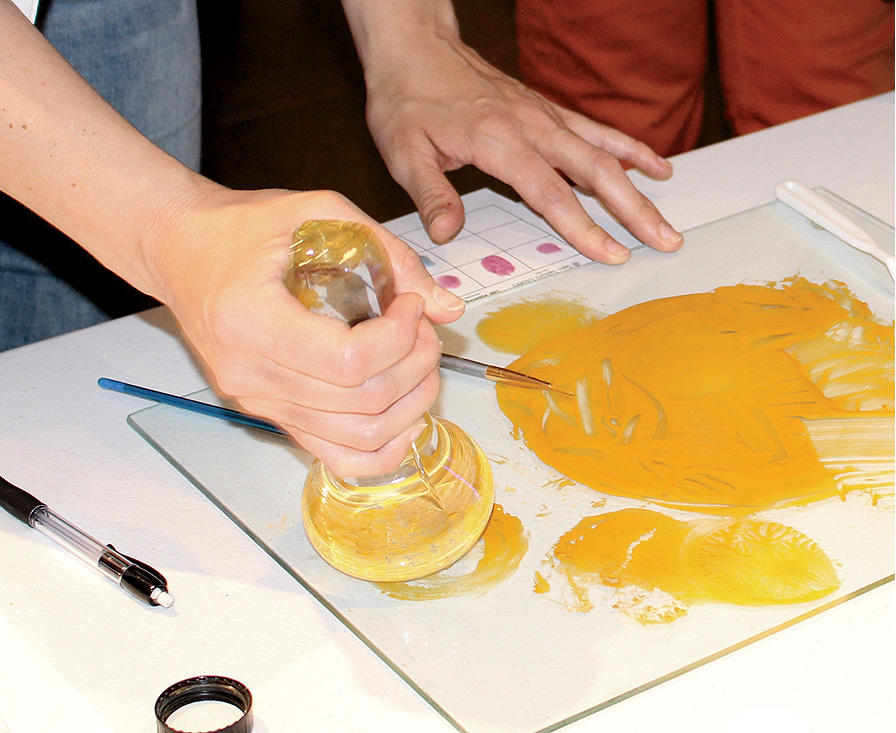Some time around 1500, a French artisan living near Toulouse decided to record his methods for making all sorts of useful things — pigments, castings, varnishes, and the like. He’d learned his craft as an apprentice and honed it through trial and error. And because he was literate in a society where literacy was just starting to spread — and perhaps anticipating publishing opportunities in the nascent “how-to” genre — he wrote down his hard-won techniques with the aid of those other useful inventions, pen and paper.
The artisan’s name is lost, but fortunately, 171 folios of his instructions and observations now reside in the Bibliothèque nationale de France, in Paris. Later this year, the Making and Knowing Project, a research initiative based in Columbia’s Center for Science and Society and led by history professor Pamela Smith, will publish a translated, annotated digital edition of this highly informative text.
Known as Ms. Fr. 640, the document reveals its author as a tireless experimenter and improviser (“try burnt oysters,” he suggests, as an alternative mold for metal castings). He was part of that class of makers who, as Smith says, “knew the behavior of natural materials and were, in fact, the scientists of their day.”
As clever as he was, though, he could hardly have supposed that five hundred years later, in a city across the sea, his recipes would be resurrected. But on a Saturday afternoon in 2019, Smith, a scholar of early-modern Europe with a keen interest in crafts and craftspeople, entered the Sato Sakura Gallery in Chelsea with a team of Columbia postdocs. The scholars would speak to the fifty people gathered there about the unknown artisan’s practical wisdom and would reconstruct some of his more colorful formulas.
Tianna Uchacz, a postdoc in art history, showed slides of the handwritten recipes and reflected on the questions they raised. What is the essence of artisanal knowledge? How does the sensory relationship with materials influence an artist? What is the connection between craft-making and scientific knowing? Then, to provide some tactile context — some making — Naomi Rosenkranz ’15BC, assistant director for the Making and Knowing Project, led a demonstration, suitable to the gallery setting, of how to combine pigments and binders
to make paint.
Rosenkranz named the pigment sources available to the ordinary sixteenth-century artisan: plants (roots, flowers, resins, berries, stalks, bark, leaves) and animals (shellfish, insects); iron-oxide minerals (ochre, umber, sienna) and earth (clays, dirt). She spoke of particles and molecules (her background is in physics), stability and instability (grass is an unstable pigment, since its stains fade), and techniques for refining substances so that they can mix with binding agents like egg-yolk tempera, rabbit-skin glue, or linseed oil.
Audience members lined up at a table to see the pigments. One pigment, a fine pink-purple powder as vivid as crushed candy hearts, was made of dried, ground cochineal, a bug native to Mexico, from which the red dye carmine is still made. Our anonymous craftsman might have been amused to watch twenty-first-century novices heeding his directives as they hunched over glass palettes, mixing powders and oils together with a glass pestle, then dipping their paintbrushes and applying them to white paper, leaving bold strokes of mulberry blush.
As they mixed and dabbed, participants were briefly transported from the mechanized world to the artisanal workshops of the French Renaissance. The exercise served as a reminder of the simple pleasures of hands-on invention — and of the adage that there is no learning like doing.
This article appears in the Fall 2019 print edition of Columbia Magazine with the title "Try Burnt Oysters."




